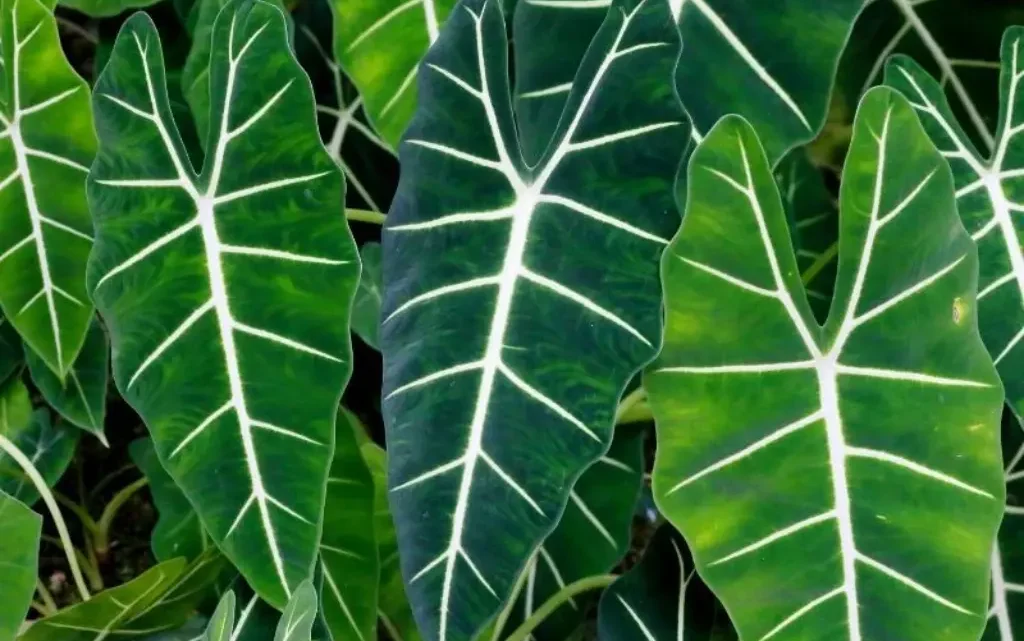
Subtleties of plant maintenance
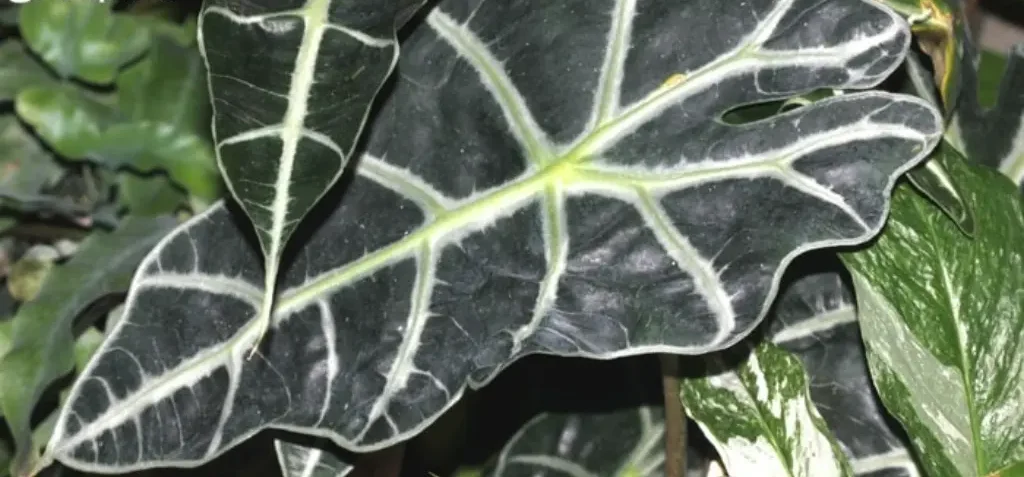
Alocasia Amazoniana grows in Southeast Asia and belongs to the araceae family. Alocasia Amazonica is an artificially bred plant whose history began only in the fifties of the twentieth century in America. It is a hybrid of species such as Sandera and Lowe. Very often it is sold as Sandera. The fact is that outwardly the two plants have a lot in common, so they are often confused and Amazonian alocasia is often listed under the wrong name.
Description and photo of Amazon
The Latin name of the plant is Alocasia Amazonica.
Alocasia Amazonica has unusually beautiful large leaves. They are distinguished by an elongated arrow-shaped shape and a metallic sheen. The dark green leaves are located on long petioles and have large white veins and distinct lobes.
Leaf size: width – 20 cm, length – 40-50 cm. The stem of the plant is fifteen centimeters in length, which allows you to place this flower even in small flower arrangements in the interior. The root of the plant is a tuber from which shoots are formed.
How is it different from other types?
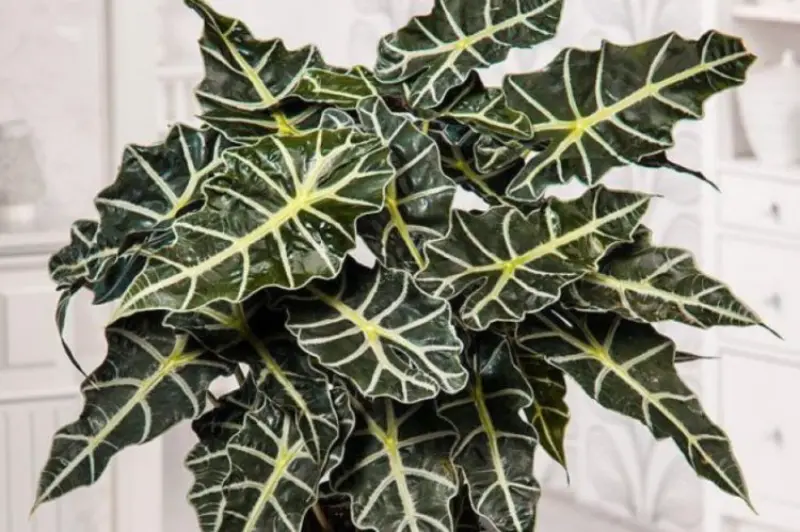
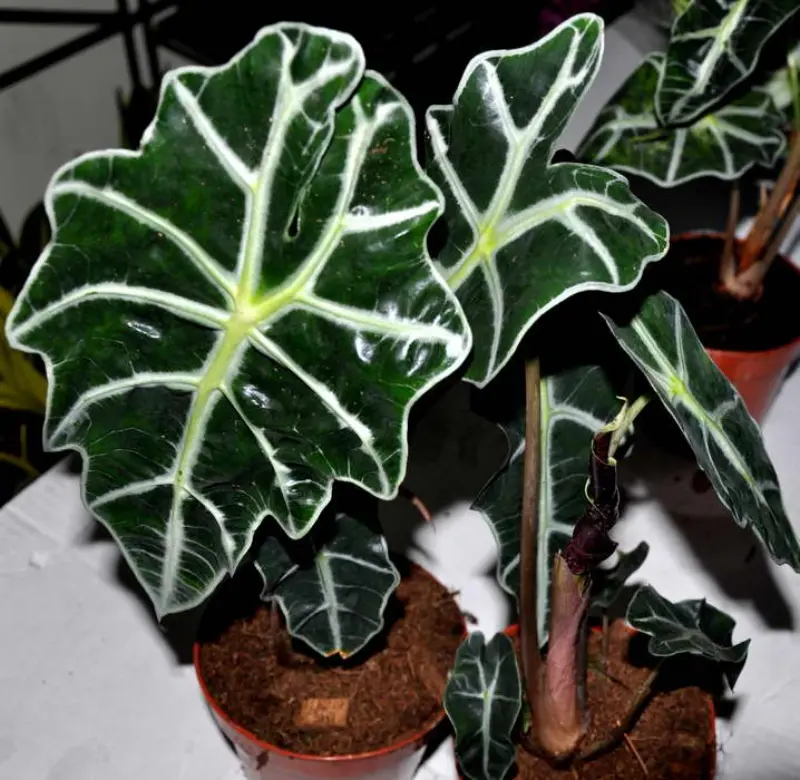
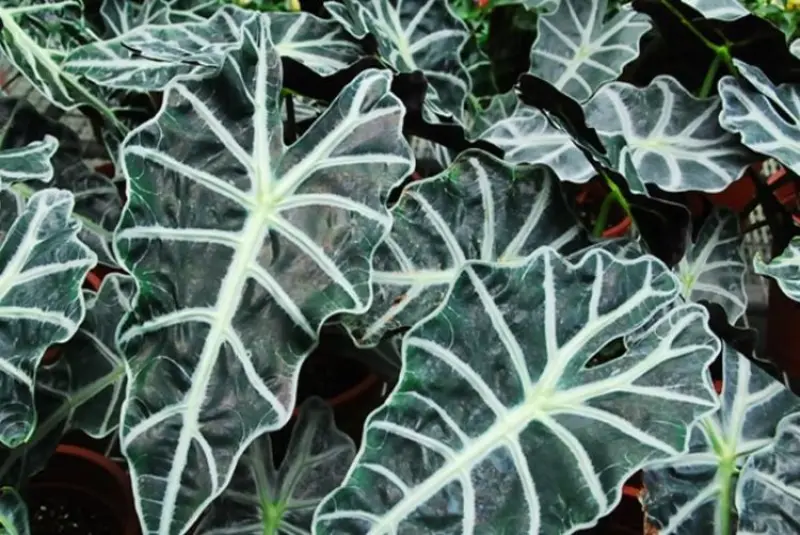
Amazonian alocasia differs from other species in that the veins on its leaves are not just white and look bright against the background of a dark leaf. They also differ in that the leaf plates have indentations, as if they had been scratched. The edges of the leaves are wavy, reminiscent in appearance of the leaves of decorative oak.
Bloom
When and how?
The flowers of the plant externally resemble unripe ears of corn, located on short stalks and wrapped on one side with a light green protective blanket. The plant blooms extremely rarely and has a strong intoxicating aroma. The inflorescences are large and can reach twenty centimeters. However, the flowering process negatively affects the health of the plant.
What do the fruits look like?
The peculiarity of this hybrid plant species is that it does not bear fruit if grown at home. In nature, as a result of flowering, red berries containing seeds ripen.
How much does an adult plant cost in the store and where can you buy it?
Alocasia Amazonica can be bought in flower shops, markets, and also in online stores.
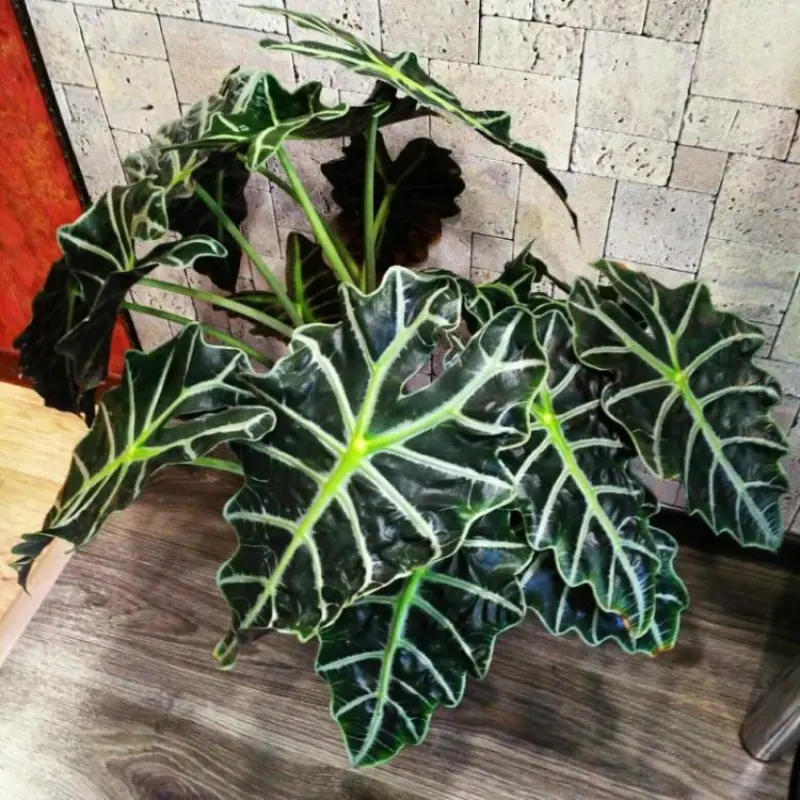
The price of an adult plant ranges from 6 to 15 $, depending on the growth, number of leaves and appearance of the plant.
Where can I get planting material?
Alocasia Amazonica can be grown from seeds or seedlings, which are sold in specialized stores at affordable prices. It is worth noting that it is safer to purchase seedlings, since the plant’s seeds quickly lose their viability.
Landing
Germinating seeds is the most time-consuming and labor-intensive way to obtain a plant. In addition, alocasia seeds quickly become unusable and this is quite difficult to determine when purchasing. You should choose seeds in the store carefully, and you need to pay attention to the following points:
- The packaging must be durable and free from any defects.
- The information on the packaging must be easy to read and the labels must be clear.
- The expiration date should be normal.

Seeds should be sown in the spring, when a gradual increase in air temperature begins and daylight hours increase. Germination requires at least ten hours of intense light . If sowing is planned in February, additional lighting will be required.
The soil required for seeds is the same as for adult plants.
- Seeds should be sown on moist soil without deepening them.
- Cover the top with glass and place it on the windowsill.
- The seeds must be periodically moistened with a spray bottle, as the soil must not be allowed to dry out.
In about 20 days they will hatch if the seed was of high quality. When sprouts appear, they need daily ventilation .
If you can’t grow alocasia from seeds or it seems too difficult, you can ask your friends for a tuber or leaf cutting of the plant.
Choosing a pot
Alocasia needs a tall and not too wide pot . You can even use narrow, spacious pots, because the plant has long roots. If you plant this plant in a wide and low pot, then very soon it will need to be transplanted into a new one, since the roots will grow into the drainage holes.
As for the choice of pot material, this point does not matter. It can be made of any material. However, the best option is always considered to be a ceramic pot without glaze.
What should the soil be like?
The soil for this plant should be light, loose and airy. It should also dry out quickly, as excess moisture causes the sensitive roots of the plant to rot. You can make a good mixture for alocasia if you mix:
- High peat.
- Ready soil for orchids.
- Garden soil.
This mixture will be an excellent soil that contains the nutrients the plant needs. And it will be able to develop properly and not lack oxygen.
Houseplant care
Temperature
The comfortable temperature for the plant in summer is from 21 to 27 degrees, and in winter it should not be lower than 18 degrees.
Lighting

The flower is photophilous, but the plant should not be exposed to direct sunlight , as it can burn the leaves. It is best to install the flower in a bright room with diffused light.
In winter, the plant requires additional lighting. A signal that a flower is lacking light is the color of the leaves. They begin to turn pale and lose their bright color.
Watering
The plant requires moderate watering, and the earthen clod should not be allowed to dry out. If it suddenly becomes noticeable that the leaf blade is drooping, this indicates a lack of water. The plant should be watered with soft, settled water. In summer, watering is required once every two days, and in winter, twice a week is enough.
The plant needs moist air, so the flower feels best in the bathroom and kitchen . In order to create the most comfortable conditions for the plant in a room with dry air, the flower pot can be placed on a tray with expanded clay. In this way, evaporation can be achieved.
It is necessary to wipe the leaves with a damp sponge as often as possible and spray water over the plant.
Top dressing
The plant needs feeding with specialized fertilizers based on potassium and nitrogen. They should be fertilized once every three to four weeks. In winter, half as much feeding is required.
Trimming
Yellowed leaves should only be trimmed when they are completely dry . After pruning, be sure to wash your hands well, as the sap of the plant contains toxic substances. Trimming is done with a sharp knife.
Transplantation
It is best to replant the plant at the beginning of the growing season, in the spring. Young plants need to be replanted annually, while adults should be replanted once every two to three years. Adult specimens do not grow intensively, so it will be enough to simply change the pot and add fresh soil once every three years. The size of the pot each time should be larger than the previous one.
Care during the flowering period
This plant blooms extremely rarely. This can only happen in an adult specimen that has reached six to seven years of age. And only if ideal living conditions were created. But this almost never happens with Amazonian alocasia under indoor conditions.
What to do if buds do not form?
The flower of a plant is not considered decorative; it only takes away the strength of the plant, so it is not needed at all. The decorative effect of the plant is in its leaves. Therefore, it is preferable to even remove the inflorescence so as not to stress the plant .
Reproduction methods

The plant reproduces in several ways. If there is an adult plant in the house, then the material for propagation is already available. Alocasia reproduces in the following ways:
- Using root shoots.
- Dividing the roots during transplantation.
- Stem cuttings.
- Propagation by leaf rooting.
- Seed method.
Diseases and pests
Root rot is the main problem of this flower. Its appearance is caused by excessive watering and lack of drainage.
Pests :
- Aphids.
- Shield.
- Spider mite.
To get rid of pests, it is necessary to treat the plant with special insecticides, and they can also be washed off with a solution of laundry soap.
Another common plant problem is yellowing leaves. The main reasons are :
- Lack of nutrients.
- Insufficient watering.
- Incorrect lighting.
If the leaf has turned yellow, you need to carefully examine it to see if there are any signs of spider mites on it. If signs are found, then simply remove the mite from the leaves using a brush moistened with dishwashing detergent, and then rinse the leaves well with water.
Prevention of various problems
In order to avoid problems with the flower, you need to observe the necessary conditions for its development. The plant should be protected from drafts, direct sunlight, excessive watering, and also from drying out.
Alocasia Amazonis is a beautiful plant that requires special conditions for normal development. If you create all the necessary conditions, there will be no problems with the flower. However, it is worth noting that people prone to allergic reactions need to be careful with this plant, as it is poisonous.



